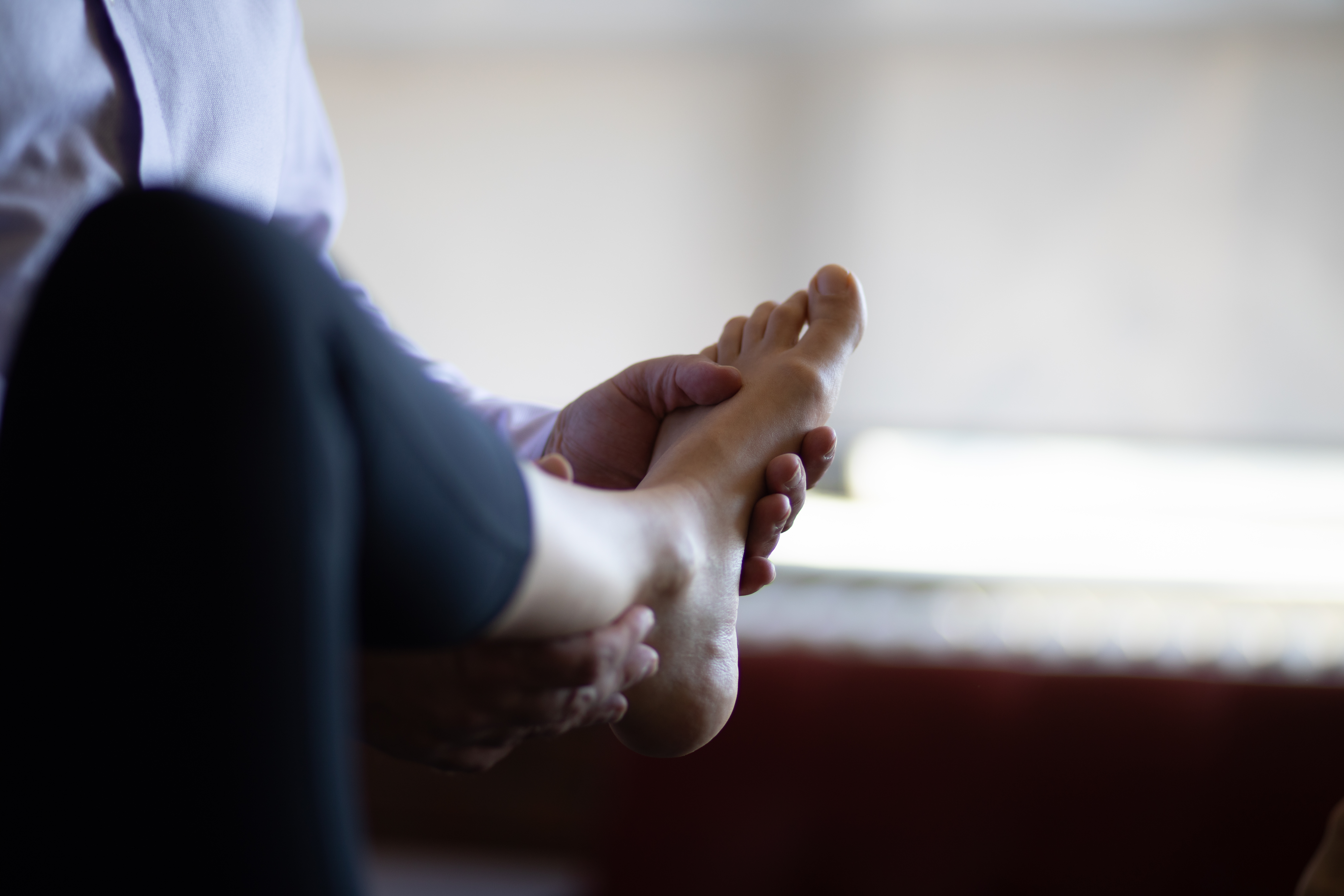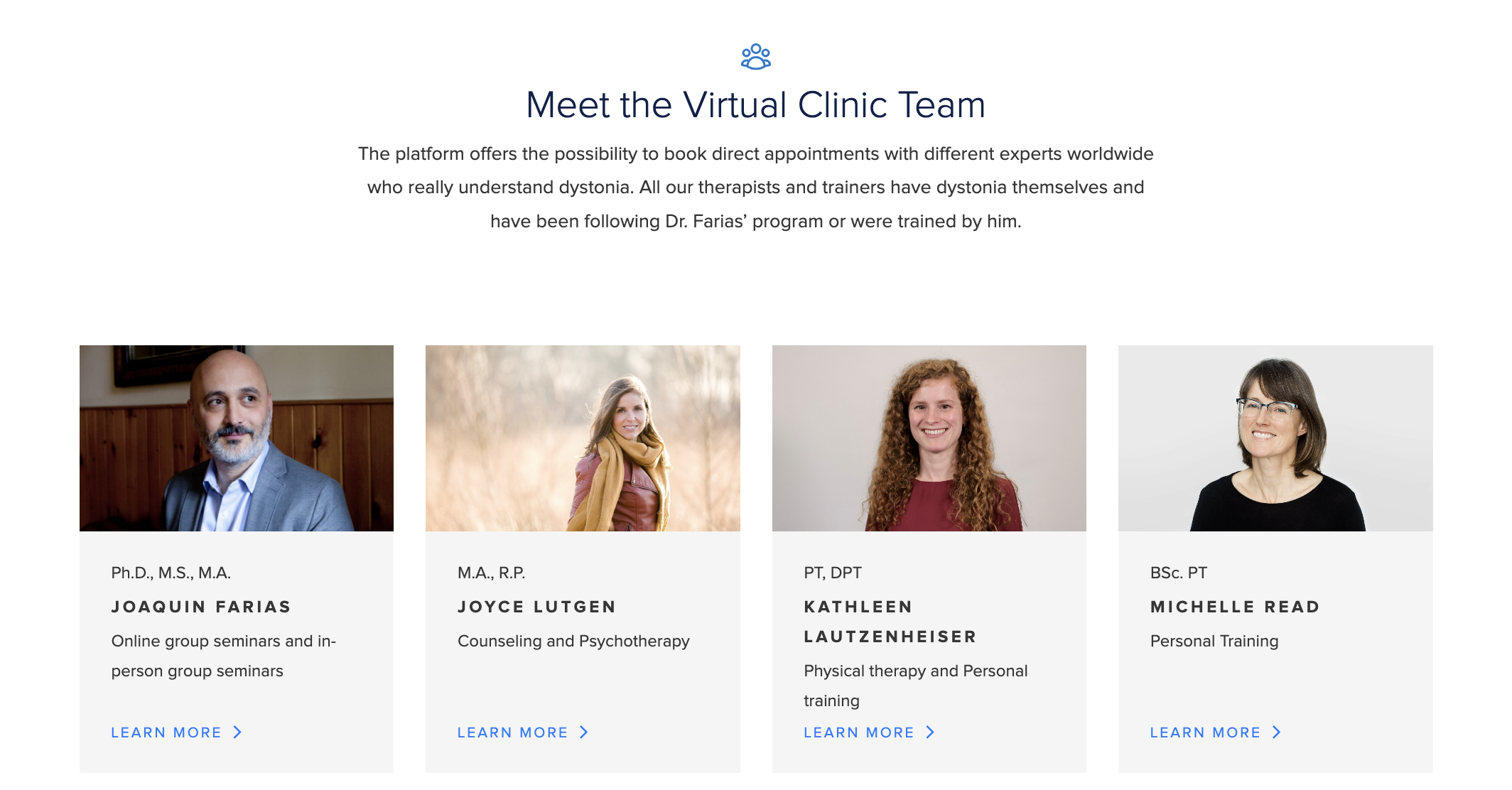About Dr. Farias Neuroplastic Training Approach
Conclusion
In conclusion, Foot Dystonia, marked by symptoms of curled toes, a clenched foot, or painful cramping, presents significant challenges. However, Dr. Farias’ Neuroplastic Movement Therapy offers a practical and personalized strategy for those seeking relief. Incremental task conditioning, strength training, and the highly individualized approach make Dr. Farias’ therapy a promising avenue for individuals navigating the complexities of Foot Dystonia. Stay connected, stay informed, and together let’s pave the way toward a more comfortable and fulfilling life.
Physical Therapy for Dystonia. The Future of Neurorehabilitation
Start your Recovery Journey Today
Join the complete online recovery program for dystonia patients.
Testimonials
“I was diagnosed with Dystonia about 5½ years ago, a few months after hip replacement surgery. Prior to my surgery, I led a very active lifestyle. I did not regain a normal walking gait following my surgery, notwithstanding lots of physical therapy. I was eventually referred to a neurologist who diagnosed my problem as Dystonia. Through my neurologist, I tried Botox and drugs and neither worked and my walking became very impaired. After years of frustration, I began working with people focused on the brain and its impact on movement, and was eventually referred to Dr. Farias. After reading Dr. Farias’ book, Limitless, I attended Dr. Farias’ workshop on foot/leg/ankle Dystonia in Toronto in early December, 2018.
I found Dr. Farias’ workshop very informative and helpful. I was extremely impressed by Dr. Farias’ and his presentation. At the beginning of the workshop, Dr. Farias stated that the goals of the workshop were to get a clear idea of what is wrong and get a clear idea of what I can do to recover function. I believe those goals were soundly achieved. The time during the workshop flew by. I learned much about Dystonia and my specific condition. I feel I now have the tools to regain my mobility. I feel very lucky to have found Dr. Farias and to have attended his workshop.”
Steve Leyton, U.S.A
“I greatly appreciate the time and talent that Dr. Farias shared with all of us this past weekend in Toronto. It was amazing to sit in a room full of people with the same experiences as I have had and then to hear someone like Dr. Farias talk about everything the way he does. I feel emotionally better in a way that I haven’t since all of this started. I trust in what I heard and know that this is what is and more importantly, what it IS NOT! The fear factor with this diagnosis is crippling in itself. Once that is removed from the equation and one can just go on and work on things a day at a time, it’s so liberating. For this, I could never express enough gratitude. Dr. Farias is helping so many and I’m blessed to have been one who met him in-person and got to hear all he had to say for the three days I was there.
I am happy to report that I already feel a bit better and had what I’d call a “good” walk today with my beautiful dog, Ellie. I have also done my exercises as prescribed every day! I will continue to do them and I will continue to check in with you and let you know how I progress.
THANK YOU!!! THANK YOU!!! THANK YOU!!!!”
Mary-Frances, U.S.A
Start your Recovery Journey Today
Join the complete online recovery program for dystonia patients.



